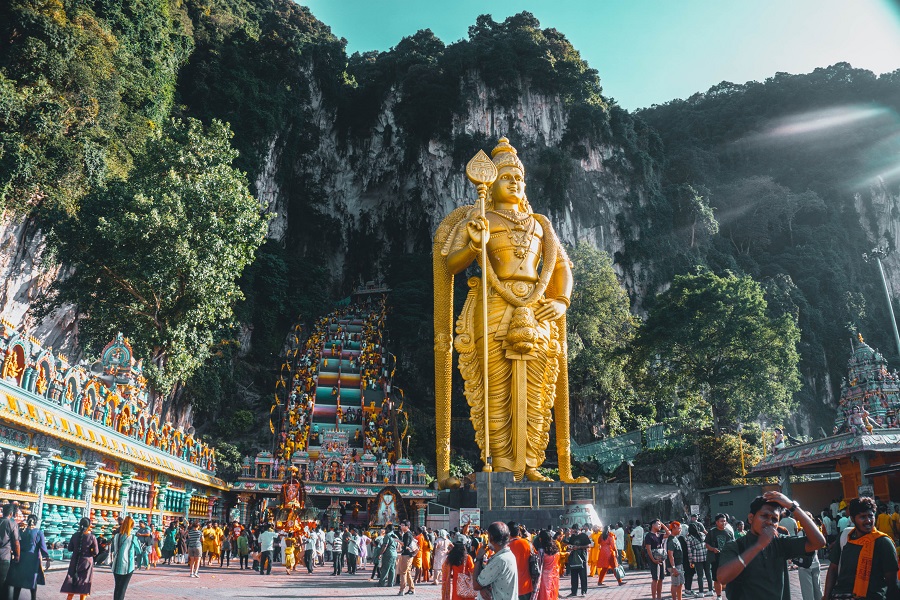Traveling to Malaysia is like opening a book where every page smells different, tastes different, and sounds alive. This Southeast Asian gem sits quietly between Thailand, Singapore, and Indonesia, yet it holds a personality all its own. Whether you’re lured in by its tropical islands, buzzing night markets, or the promise of unexpected perks (sometimes you stumble upon things like joylink free credit while booking local deals), Malaysia rarely disappoints. It’s a country that greets you with variety before you even know how much you need it.
The First Encounter: A City of Contrasts
Most journeys begin in Kuala Lumpur, and KL doesn’t waste time showing off. Imagine steel skyscrapers—Petronas Towers gleaming like twin beacons—rising beside old colonial shophouses and bustling street stalls. It’s a city where you can have dim sum for breakfast, nasi lemak for lunch, and a fancy rooftop cocktail for dinner. Sounds overwhelming? It is, but in the best way possible.
The energy is real. Monorails rush above traffic, call to prayer blends with chatter in multiple languages, and aromas drift from Indian curries to Chinese stir-fries to Malay satay. Your senses don’t get a moment off, but honestly, why would you want them to?
Beyond the City: Nature That Stuns
Malaysia’s nature isn’t subtle—it’s bold, unfiltered, and unforgettable. Take a boat into the mangroves of Langkawi, where monkeys leap from tree to tree while eagles swoop overhead. Or trek through the Cameron Highlands, where rolling tea plantations stretch like green patchwork quilts under cool mist. You’ll find orangutans in Borneo’s rainforests, turtles nesting on Terengganu’s beaches, and limestone caves in Sarawak that feel like nature’s cathedrals.
And then there’s the sea. The Perhentian Islands and Sipadan are underwater paradises. Even if you’ve never snorkeled before, you’ll come back with stories of clownfish darting through corals and sea turtles gliding like old wise men of the ocean.
The Food Obsession (Rightly So)
Let’s be honest—food is a massive reason people fall in love with Malaysia. This is not just eating; this is cultural storytelling on a plate. Each meal feels like a family gathering of flavors from Malay, Chinese, Indian, and indigenous traditions.
Char kway teow is smoky from the wok. Roti canai has buttery layers that are begging to be dipped in curry. Laksa is a bowl that somehow combines comfort and fire in every slurp. Even a simple roadside satay—skewers grilled over open flames, served with peanut sauce—will make you question why you ever thought fast food was good enough.
And the best part? Food here is not about fancy restaurants. The real treasures hide in hawker stalls, night markets, and kopitiams (local coffee shops) where meals are cheap, cheerful, and ridiculously tasty.
Cultural Blend That Works
Malaysia is officially multicultural, and you feel it everywhere. Mosques, temples, and churches share the same street. Public holidays rotate through Hari Raya, Chinese New Year, Deepavali, and Christmas. You hear Malay, Mandarin, Tamil, and English often in the same conversation. Far from being chaotic, it’s like a living example of how diversity can feel natural, even comforting.
Festivals bring this to life. Picture lanterns glowing in Penang during Chinese New Year, the aroma of sweets during Deepavali, and entire villages lit up for Hari Raya. Each celebration welcomes outsiders like honored guests—you’re not just observing, you’re invited to join.
Stories on the Road
Every traveler has that one moment that sticks. Mine was in Penang, sitting at a plastic table under a flickering light, trying my first bowl of Penang assam laksa. The broth was tangy, spicy, fishy, and utterly confusing at first. Then it clicked, and I realized—this dish told a story of generations, of trade routes, of survival and creativity. Travel moments like these don’t just feed you; they stay with you long after the plane ride home.
Another memory: hitching a ride in Borneo with a local fisherman who pointed out crocodiles with the casualness of someone pointing out pigeons. Terrifying? Absolutely. But it was also a reminder that in Malaysia, adventure often shows up when you least expect it.
The Practical Side
Traveling in Malaysia is pretty easy compared to some destinations, but it helps to know a few things:
-
Transport: Domestic flights are cheap and quick, but buses and trains connect most cities. Grab (the local ride-hailing app) is a lifesaver in urban areas.
-
Weather: Hot and humid year-round. Monsoon seasons vary by coast, so check before planning beach trips.
-
Money: ATMs are widespread, and cards are accepted, but cash still rules at markets and food stalls.
-
Safety: Generally safe, though, like anywhere, keep an eye on your belongings in crowded areas.
The Unexpected Joys
Malaysia has a way of surprising you. You might set out for a temple and stumble into a street parade. Or plan for beaches but end up hiking mountains instead. It’s that unpredictability that keeps travelers coming back. Nothing here feels manufactured for tourists; it’s raw, real, and welcoming.
And maybe that’s the magic. While other destinations polish themselves into glossy brochures, Malaysia stays a little untamed—like a friend who refuses to be anything but themselves.
Closing Thoughts
Malaysia is more than a travel destination—it’s an experience that grabs all your senses and refuses to let go. It’s messy, beautiful, flavorful, and alive in ways that cities and resorts designed purely for tourism never are. If you’re open to being surprised, to following your nose (literally), and to letting each day unfold, Malaysia will reward you tenfold. And who knows, along the way you might stumble across another little bonus—something like joylink free credit—but the real prize is always the journey itself.
Quick FAQs
Is Malaysia expensive to travel in? Not at all. Street food is cheap, accommodations range from budget hostels to luxury hotels, and transport is affordable.
Do I need to speak Malay? English is widely spoken, especially in cities, though learning a few Malay phrases will definitely earn smiles.
What’s the best time to visit? Dry months are usually best—December to March for the west coast, and June to September for the east coast.
Is Malaysia good for solo travelers? Yes. It’s safe, welcoming, and easy to navigate. Plus, you’ll meet plenty of fellow travelers along the way.



